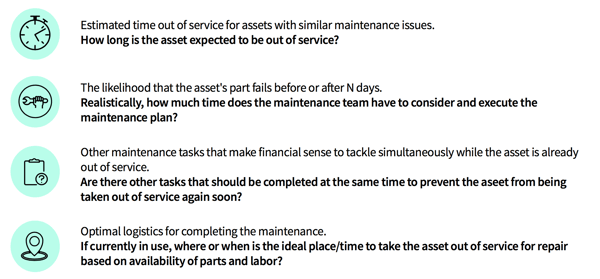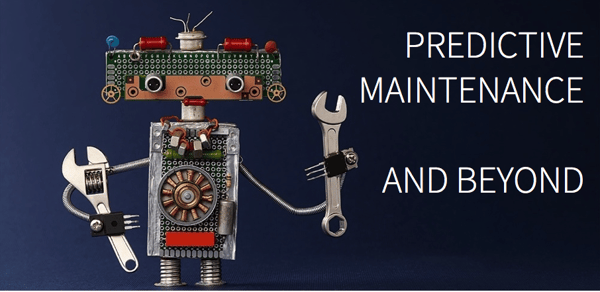With many types of predictive analytics strategies, just making a prediction often isn’t enough (or it isn’t the end goal); value really comes in the decisions that follow that prediction. But those decisions can require a whole separate analysis of their own — that’s where second-order analytics come in.
Just like uplift modeling with churn prediction to determine which churners to target with marketing messages, predictive maintenance also generally requires another level of analytics to optimize subsequent decisions about that high-value asset’s upkeep.
Secondary, or second-order, analytics is a critical part of a complete predictive maintenance strategy. Take a look at the guidebook on predictive maintenance for a more in-depth, overall look at the entire strategy and process overall.
Answer the “When” and “How”
Once it’s clear repair of a high-value asset is necessary via predictive maintenance techniques using data from all kinds of sources, including Internet of Things (IoT) sensors, initial — perhaps automated — first steps or processes will be kicked off (things like filing a work order or notifying maintenance staff).
From there, that’s where second-order analytics come in. Because taking high-capital assets out of service can be extremely costly in and of itself (even when compared to the benefits of identifying necessary maintenance before run to failure), the next questions are when and how?
Take, for example, a truck from a large fleet with a part identified by your predictive maintenance system as being N days away from failure. Once identified, a member of the data team should be ready to send a secondary follow-up report to the maintenance team detailing the best possible options for time and place of service.
For Example
Some examples of critical questions to ask (and answer) with second-order analytics following the prediction of required maintenance are:

Ultimately, the goal of secondary analytics following predictive maintenance is to determine a plan of action for exactly when the asset should be taken out of service so as to minimize disruption and loss (both imminent and future) and maximize resources. Second-order analytics isn’t just for maintenance; being prepared to take action on a decision in the most optimal way and execute despite the complexities of the system are fundamental to any predictive strategy.





